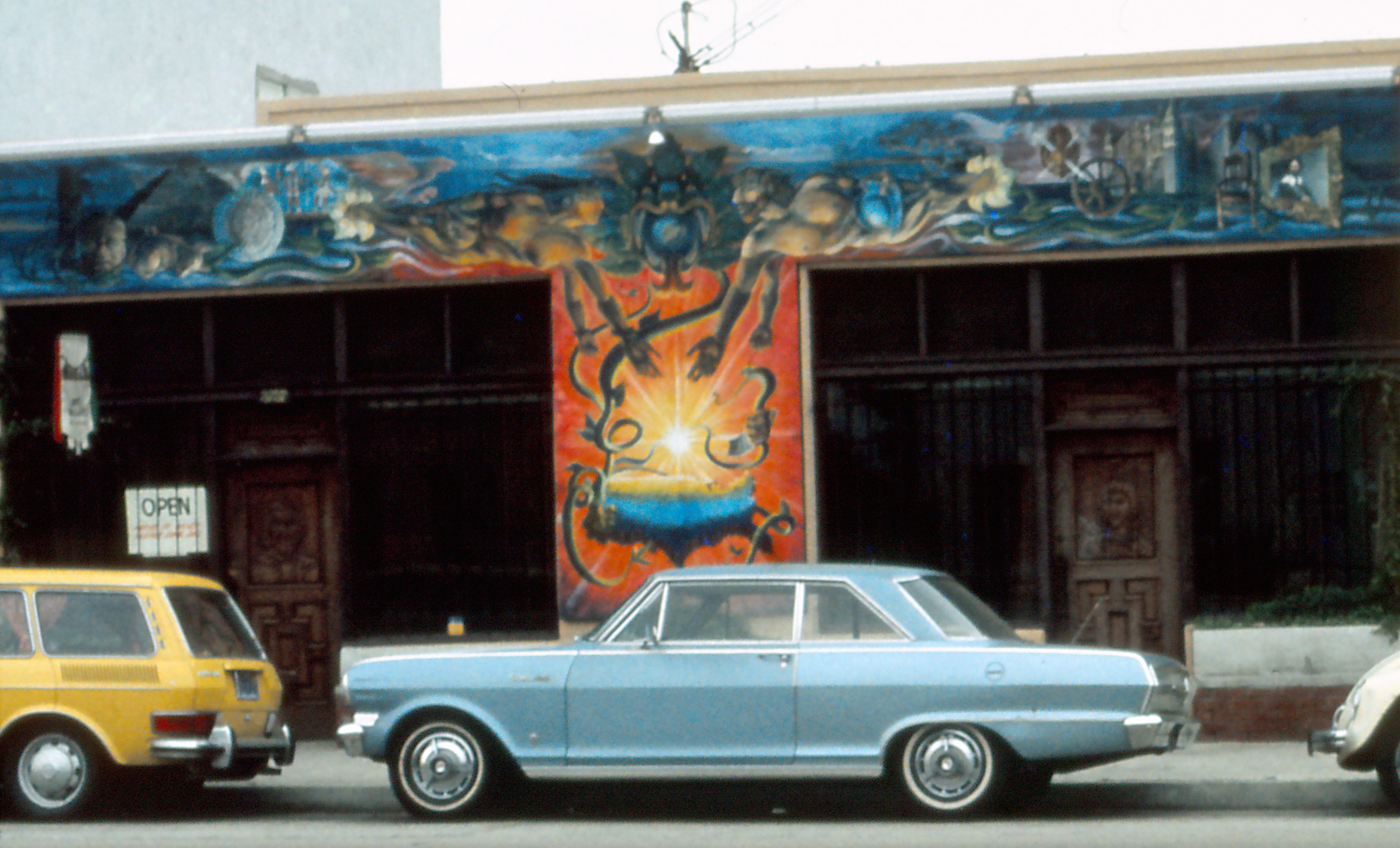When “Don Juan” Johnny Gonzalez recalls his first mural designs, his hazel-colored eyes shine a little bit brighter.
“The Birth of Our Art,” the vibrantly-colored 1971 mural he designed and painted along with a dozen other collaborating artists, dominates the entrance of Fowler Museum’s latest exhibition, “Mapping Another L.A.,” which features the works of nearly 60 artists connected to the Chicano arts movement.
The exhibition is part of the Getty Center’s “Pacific Standard Time: Art in L.A. 1945-1980,” a Southern California-wide arts initiative aimed at representing the unexamined art history of Los Angeles.
The 33-foot long wood panel mural had been hidden in storage until it was retouched and reassembled for the Fowler for the first time since it filled the facade of Goez Art Studio and Gallery and The East L.A. School of Mexican American Fine Arts from 1971 to 1981.
Standing before the outstretched deified figures of Hernán Cortés and La Malinche in the vivid hues of blue, orange and yellow he first painted 40 years ago, Gonzalez remembers a moment in Los Angeles history with a notable lack of Chicano representation in film, television and public office. According to Gonzalez, this absence affected his self-esteem while growing up.
“We didn’t (call ourselves) “˜Chicano,'” Gonzales said. “It was belittling at that time. You wouldn’t say it in public.”
Gonzalez said it was after traveling abroad in Europe and seeing Michelangelo’s Florentine Medici tombs and other widespread cultural preservation that he was inspired to begin cultivating the arts in his own East Los Angeles neighborhood. What began with sketched plans for Chicano cultural monuments eventually led to mural designs.
The mural sparked a cultural renaissance of sorts and was among the first of 275 murals made by Chicano arts groups in East Los Angeles over the span of four years. His efforts alongside Goez Art Studio and Gallery and other artists gained attention from both the media and public officials, resulting in public recognition April 25, 1976, which was made “East L.A. Mural Day.”
“I didn’t just make art ““ the (projects) are a campaign, there’s a purpose, but I rarely use the word (campaign) because people think it’s not artistic,” Gonzalez said. “When I started designing, I started thinking about a message, of East L.A. giving birth to a national Chicano arts movement.”
According to curator and professor Chon Noriega, “The Birth of Our Art” mural served as a key starting point for the exhibition, which examines the works of nine Chicano arts groups working in Los Angeles during the 1970s.
“We wanted to look at these nine (groups) and the way they interacted with each other,” Noriega said. “We want to show what these artists did … and how that created a social network across the city that allowed hundreds of other artists to get exposure and training.”
Noriega said that researching the largely untold Chicano art history for the show grew out of a project that began in 2004. Noriega and fellow curators spent the last two and half years organizing an exhibition focused not only on the art work of Chicano arts groups but also working to restore films documenting the groups’ projects, music and events, many of which had not been seen since they were first recorded in the 1970s.
“”˜Pacific Standard Time’ is an incredible opportunity for students to get to understand the city of Los Angeles,” said co-curator Pilar Tompkins Rivas. “There’s been a gap in the historical record for a lot of the work that’s going to be presented as part of this whole initiative.”
Original black-and-white and faded color photographs are also displayed alongside vintage graphic prints advertising Chicano arts events in the exhibition. The effect presents a multi-layered perspective providing a detailed historical context for the works displayed.
“This is a once in a lifetime type of effort, with a focus on a very key moment when L.A. does become more of an arts center globally,” Noriega said. “There’s a wider range of things that people may have some idea about, or know nothing about, that I think will be getting a lot of prominence.”
